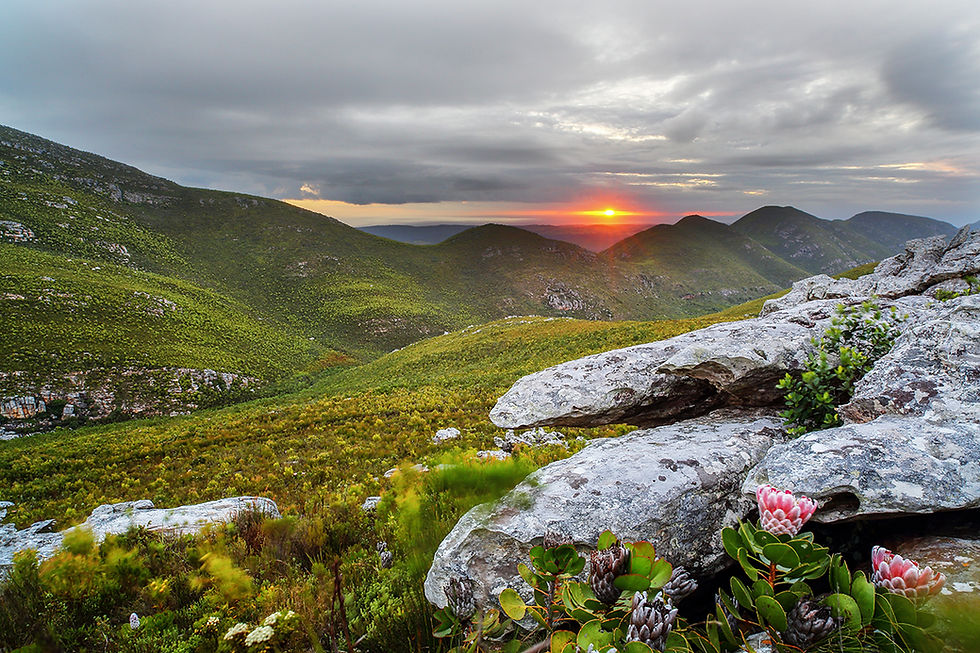Talking about getting it wrong...
- antonroland
- Sep 26, 2022
- 3 min read

The fun thing about landscape photography is that it often goes very wrong and you don't even notice until much later.
After all, getting it "wrong" and improving is one of the best reasons to go back and try again, right?
I remember this morning revisiting a spot at Supertubes in Jeffreys Bay. Ready to capture some sunrise images I was very pleased with myself to find this rock formation before dawn AND that the tides worked out well for some blurred water.
What I did NOT notice was the slight on-shore breeze. Normally I would watch for the odd over-achieving wave that splashes through. None of that should have happened here because the waves did their splashing meters away. What I did NOT count on or foresee was the misty fine small droplets of salt spray that drifted in with the breeze. Only when I packed up and placed the lens cap back on the lens did I notice this. Now you would think I should have noticed this on the camera's rear screen reviewing images but no, these droplets were that small. Small enough to go unnoticed, big enough to ruin the images.
Oh well, I still had good fun and good coffee. The lens came away unscathed but, in hindsight, this is one of those situations where I really would have wanted a premium UV filter on the front of the lens. Nothing is as horrible as a cheap UV filter but I really did not like the salty mist on the lens. Modern lens elements are coated for optical performance and the coatings are fairly durable but they can damage. I would much rather toss a good UV filter in the bin than the lens itself.
Lesson learned here? Always double-check and triple-check for even those little things very unlikely to go wrong.
Now, about polarisers and wide angle lenses...
If, or rather, when the semi-serious landscape bug bites, you will find yourself wanting to try a polarising filter. This is a great thing because a polariser is possibly THE only filter that can't be faked well in post-processing.

The thing with a polariser is that they do a magnificent job shooting across the light. That is, more or less a 90 degree angle to the sunlight. If you want primary colours to pop, use a polariser. Blues, reds, yellows and even whites will appear amazingly saturated, crisp and bright. Never shoot a polariser into the light or at the same angle with the light. You will not gain any benefit from it.
The downside is that they also cause freaky variable blue gradations in the sky when used with a very wide lens. This image above was shot using a 16-35mm lens and very likely at the 16mm wide end. Definitely at 20mm setting or wider. So I recently tested the limits thinking that the 35mm long end would be safe.
Nope, wrong again. The effect is much less pronounced but still there. Somewhere in the near future I will test the idea using a 50mm lens and report back.
For a few more random ideas about polarisers, buy a linear polariser if you can still find a good one. By good, of course, I mean premium branded and expensive. There are many gurus out there who will rave on about the practicalities and superiorities of circular polarisers over linear polarisers. They will tell you that modern cameras can't auto-focus through a linear polariser. Absolute rubbish. A linear polariser will yield a superior look and stronger visual effect in your images. Entry level bottom-of-the-barrel D-SLR cameras built long before 2008 to 2010 MAY have battled a bit to find focus in certain conditions. Under those conditions you probably wouldn't have used a polariser to begin with.
As with anything in life there are plenty cheap alternatives out there. Photography does not entertain that idea though. There is simply no aspect in photography where I would recommend a cheap alternative. Not even batteries. No wait, especially not batteries.
Well, there you go. I simply can't share all my mistakes in one article or it might take days to write and hours to read.
Until next time, happy shooting!
Anton



Comments